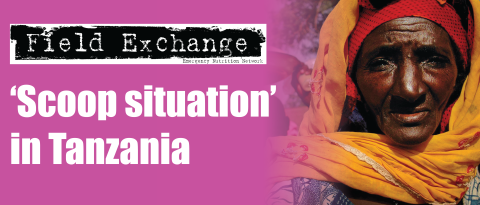Mortality and nutrition surveys by NGOs
Summary of research1
Between 1980 and 2000, the number of non-governmental organisations (NGOs) registered within the Organisation for Economic Co-operation and Development (OECD) industrialised countries increased from 1600 to over 4000. Nearly half are involved in crisis situations.

A recent paper has explored the strengths and gaps among the surveys conducted by NGOs and other agencies, based on an analysis of the records of the Complex Emergency Database (CE-DAT) held within the Centre for Research on the Epidemiology of Disasters (CRED) in Brussels. This database was created in 2004 in an attempt to collect surveys from complex emergency situations and to make this information available through an internet-based database. The overall objective is to improve the evidence-based policy on conflict prevention and response by providing standardised and comprehensive data on the human impact of conflict.
The surveys compiled by CE-DAT report on mortality, nutrition and vaccination indicators. As of January 1st 2007, the database contained information on 1329 nutrition and/or mortality surveys from 41 different countries conducted between 2000 and November 2006. Most surveys (over 90%) included nutritional indicators and almost two-thirds covered mortality as well.
Overall, two-thirds of the surveys were undertaken by NGOs or in partnership with one. United Nations (UN) agencies were involved in 37%. Only one-fifth involved government bodies. Surveys undertaken by NGOs covered smaller geographical units than those undertaken by UN, government or academic groups. While the UN provides surveys that are nationwide or cover very large regions, NGOs are practically the main source of information at sub-national levels for internally displaced people and affected residents. NGOs have access to insecure areas that, for various reasons, are inaccessible to academics or UN organisations. Data on refugees in camps, on the other hand, are primarily available through the UNHCR Standard Indicator Reporting system, which partly draws from NGO reports and partly from their own civil registration system.
The data selection process in CE-DAT indicates that survey quality and use of standard methodology is more advanced for nutrition information than for mortality or morbidity data. There is consensus on the use of nutritional survey information to confirm the severity of a crisis and on procedures for gathering and analysing anthropometric data. In almost all nutritional surveys, the results are triangulated with morbidity and mortality rates, seasonal fluctuations, pre-emergency levels of malnutrition and the underlying causes of malnutrition.
On the other hand, there is less consensus on the optimal methods for measuring mortality and morbidity in crisis situations and their interpretation for judging the severity of the crisis or identifying the appropriate response. The quality of mortality surveys in conflicts was variable and coverage uneven compared to nutrition surveys. However, there was little difference between the levels of methodological detail in the survey reports of NGOs, UN and academic agencies.
The authors conclude that NGO are the main source of surveys from complex emergency sites and provide information at lower levels of resolution than other sources. NGO surveys also aim at assessing a local situation for needs and programming resources or for monitoring their impact. NGO surveys do, however, suffer from some weaknesses. First, consensus on appropriate thresholds and baselines to estimate excess deaths needs resolution, not just amongst NGOs but all parties involved. It is also suggested that NGO survey reports should strengthen the peer review process. Limited peer review, which is the case for most NGO surveys, affects both quality and credibility of their work. At the same time, the shelf-life of survey findings in emergency situations is extremely short and a significantly rapid peer review mechanism will need to be found so that results are not outdated for any practical decision making.
1Degomme. O and Guha-Sapir. D (2007). Mortality and nutrition surveys by Non-Governmental organisations. Perspectives from the CE-DAT database. Emerging themes in Epidemiology, vol 4:11 pp 1-5, 2007 Available online at http://www.eteonline.com/content/pdf/1742-7622-4-11.pdf
Imported from FEX website


